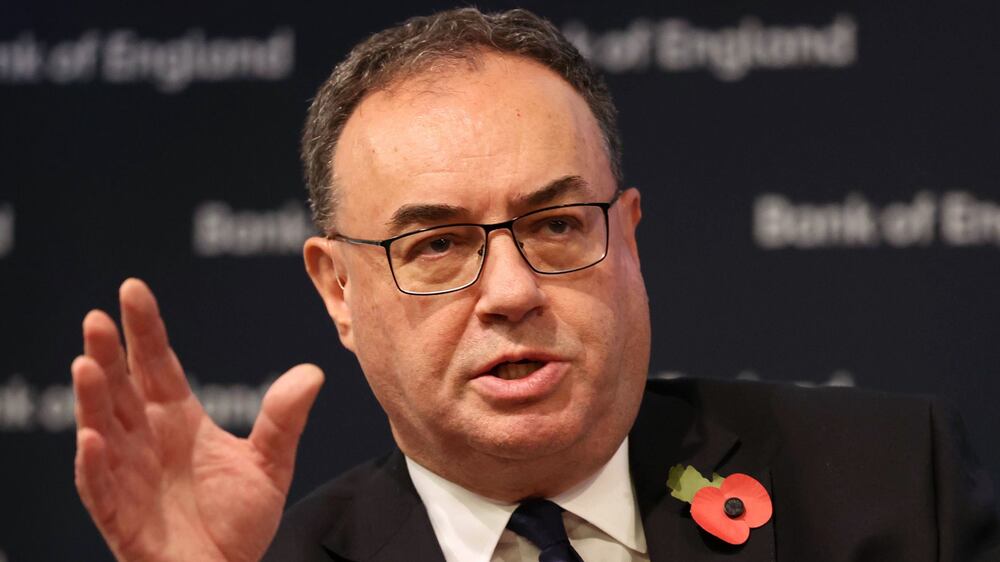Every investor wishes they had a crystal ball. Anyone who did would have piled into Amazon at the start of the millennium, bet the house on Apple shares, and shorted banking stocks moments before the financial crisis struck in 2007.
They’d have bought shares in Zoom, Peloton and Netflix before the pandemic and sold them as the lockdown ended, and made an overnight fortune playing GameStop, AMC Entertainment and all those other mind-bending meme stocks.
Investing would be all upside, and no downside, if only we knew what was coming round the corner.
Sadly, we don’t. There’s no crystal ball. Second-guessing market movements is next to impossible, nobody knows what’s coming next. We remain at the mercy of events.
That doesn’t stop people from trying, though. You can always find one analyst or another calling the next bull run or stock market crash, even if they get it wrong 99 times out of 100.
The big irony of investment predictions is that short-term movements are impossible to second-guess, while longer term trends are a bit more predictable.
Few will have predicted the wild swings we have seen this millennium, as the dot-com crash, 9/11 terror attacks, global financial crisis, pandemic and energy shock left investors reeling. Or foreseen the sheer scale of the decade-long US tech stock rally.
Yet, those who assumed that in the longer run shares would still beat every other asset class, as they have done for more than a century, will largely have been proven right.
Similarly, we can assume that bonds will deliver a lower return but with less risk, and splitting the two asset classes in a 60/40 equity-bond portfolio gives investors the best of both worlds – with the notable exception of 2022, when both crashed at the same time.
This knowledge emboldens the likes of JP Morgan Asset Management to publish its annual Long-Term Capital Market Assumptions, which provides a 10 to 15-year outlook for risks and returns across major asset classes.
Its 28th edition, just published, aims to provide “actionable insights as investors look to build smarter portfolios in the midst of a transition from disinflation to reflation, and from policy accommodation to higher costs of capital”.
It aims to provide, if not a crystal ball, then at the very least a “road map” to steer through unpredictable markets.
So, what’s the direction in 2024 and beyond?
The good news is that the forecast annual return for a US dollar-dominated 60/40 stock-bond portfolio over the next 10 to 15 years is an attractive 7 per cent per year.
Investors who add a 25 per cent allocation to alternative assets have “clear opportunities” to boost this to around 7.6 per cent, it says.
Investors will be delighted to hear that the “long-term growth outlook has risen slightly”, as automation and artificial intelligence boost productivity, while the energy transition and new technologies deliver thrilling new investment opportunities.
While these trends will drive developed market growth, the report’s emerging market forecasts have “dipped slightly due to lower trend growth in China”.
JP Morgan head of global multi-asset strategy John Bilton says the world is entering a period of significant economic transition in the wake of the global pandemic and heightened geopolitical tensions, and this will have far-reaching implications for investors.
“We are now moving away from an environment with persistent disinflation, ultra-easy monetary policy and fiscal restraint,” Mr Bilton says.
This transition requires investors to build “robust portfolios”, which should include reducing cash exposure to harvest better returns and broaden international exposure to enhance returns and diversification, he adds.
JP Morgan’s LTCMA lands just as investors get their appetite for risk back after the US Federal Reserve, European Central Bank and Bank of England all froze interest rates again, suggesting the rate hike cycle may now have peaked.
While central banks warn that rates could still climb higher – and the Fed may even mean it – investors have rediscovered their appetite for risk as they anticipate the end of rate hikes, says Kyle Rodda, senior market analyst at Capital.com.
“Risk appetite remains strong after this week’s positive developments on the monetary front, despite mixed corporate results and lingering geopolitical worries in the Middle East,” he adds.
Lindsay James, investment strategist at Quilter Investors, says peak interest rates should be good news for investors and next year’s anticipated rate cuts would be even better, “as they can often bring about very strong returns”.
“While markets may not be shooting the lights out, remaining invested over this period is going to be crucial,” she adds.
Chris Beauchamp, chief market analyst at online trading platform IG, says last week’s stock market rally arrived “almost on cue in seasonality terms”, as the final weeks of the year tend to be best for shares.
However, he also warns that hopes of peak rates have been dashed before and investors “need to resist the temptation to charge back into stocks too quickly”.
Yves Bonzon, group chief investment officer at Swiss bank Julius Baer, reckons concerns that the Israel-Gaza conflict will spiral out of control and send oil prices soaring have been overdone. Instead, he is looking forward to a year-end rally.
He says the US stock market has been the big winner of the past decade and is likely to dominate global capital markets in 2024 and beyond.
“Regardless of relative valuations, there is a reason why US assets continue to outperform non-US assets for an extended period of time. In light of the new geopolitical reality, there is simply no sizeable alternative to US dollar capital markets for Western investors,” adds Mr Bonzon.
Bank of England keeps interest rates at 15-year high

He also suggests we are on the cusp of an “innovation super cycle”, which would allow for significant value creation among market leaders.
“Historically, the Nasdaq has been at the forefront of creating such value during these super cycles. We would selectively consider disruptive innovators in other domiciles, too,” says Mr Bonzon.
The US may be mired in debt and facing a potential recession. But, as history shows, no market can touch it and that is likely to remain the case for the next 10 to 15 years, too.
Shares have had a bumpy ride, but is there really any serious alternative?
Just remember to diversify. Now may be a good time to also buy a few government bonds as yields peak.
Build a balanced portfolio and hold for the long term. No crystal ball required.






